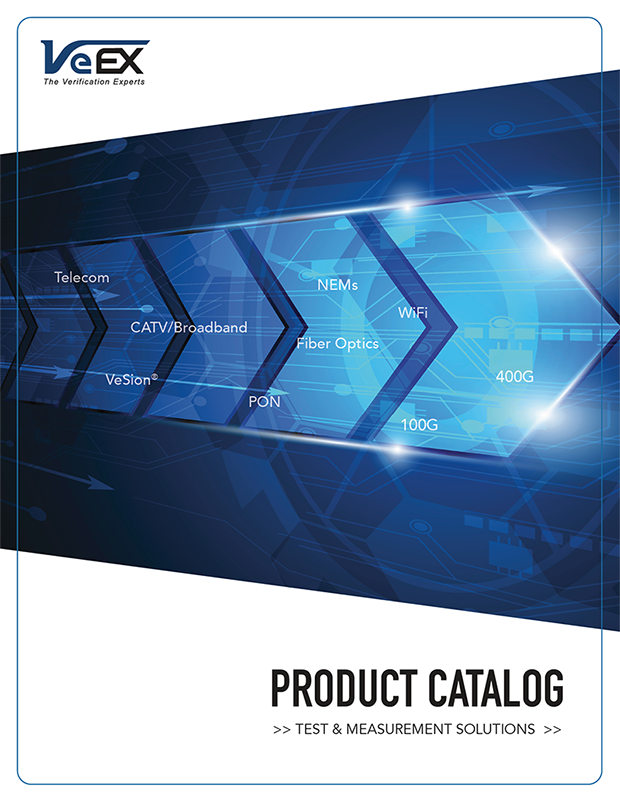RoHS Compliance
VeEX QUALITY AND ENVIRONMENTAL POLICY

Our quality and environmental policy is to limit and progressively eliminate the use of hazardous substances and chemicals in the design and manufacture of our products.
VeEX products are classified as Monitoring and Control Instruments under Article 2, Section (1), Category 9 of the WEEE 2002/96/EC Directive.
RoHS and WEEE Position Statement
The Council of the European Union and the European Parliament adopted Directive 2002/95/EC (January 27, 2003), to Reduce the use of certain Hazardous Substances (RoHS) in Electrical and Electronic Equipment, and Directive 2002/96/EC on Waste Electrical and Electronics Equipment (WEEE), with the purpose of reducing the environmental impact of waste electrical and electronic equipment. Both were later recast by Directives 2011/65/EU and 2012/19/EU respectively. All VeEX products being placed on the EU market conform with these directives.
Additional RoHS substance restrictions for the Monitoring and Control Instruments were adopted by EU Directive 2015/863 (March 31, 2015). These new restrictions will take effect from July 22, 2021. VeEX has established a program to ensure that from July 22, 2021, all its products to be sold and shipped into the EU market will conform with (EU) 2015/863.
VeEX Inc. is committed to comply with RoHS and WEEE Directives to minimize the environmental impact of our products.
FAQ
1. What is RoHS?
RoHS is the acronym for Restriction of Hazardous Substances. Also known as Directive 2002/95/EC, it originated in the European Union and restricts the use of specific hazardous materials found in electrical and electronic products. All applicable products imported into the EU market after July 1, 2006 must pass RoHS compliance.
2. What are the restricted materials mandated under RoHS?
The substances originally banned under RoHS are lead (Pb), mercury (Hg), cadmium (Cd), hexavalent chromium (CrVI), polybrominated biphenyls (PBB) and polybrominated diphenyl ethers (PBDE). RoHS 3 added the following restricted substances: Bis(2-ethylhexyl) phthalate (DEHP), Butyl benzyl phthalate (BBP), Dibutyl phthalate (DBP), Diisobutyl phthalate (DIBP)
3. Why is RoHS compliance important?
The restricted materials are hazardous to the environment and pollute landfills, and are dangerous in terms of occupational exposure during manufacturing and recycling.
4. How are products tested for RoHS compliance?
Portable RoHS analyzers, also known as X-ray fluorescence or XRF metal analyzers, are used for screening and verification of RoHS compliance.
5. Which companies are affected by the RoHS Directive?
Any business that sells applicable electronic products, sub-assemblies or components directly to EU countries, or sells to resellers, distributors or integrators that in turn sell products to EU countries, is impacted if they utilize any of the restricted materials.
6. What is WEEE?

WEEE is the acronym for Waste from Electrical and Electronic Equipment. WEEE, also known as Directive 2002/96/EC, mandates the treatment, recovery and recycling of electric and electronic equipment. All applicable products in the EU market after August 13, 2006 must pass WEEE compliance and carry the "Wheelie Bin" sticker.
7. How are RoHS and WEEE Directives related?
WEEE compliance aims to encourage the design of electronic products with environmentally-safe recycling and recovery in mind. RoHS compliance dovetails into WEEE by reducing the amount of hazardous chemicals used in electronic manufacture.
Annex IA of Directive 2002/96/EC (Categories)
- Large household appliances
- Small household appliances
- IT and telecommunications equipment
- Consumer equipment
- Lighting equipment
- Electrical and electronic tools (with the exception of large-scale stationary industrial tools)
- Toys, leisure and sports equipment
- Medical devices (with the exception of all implanted and infected products)
- Monitoring and control instruments
- Automatic dispensers



